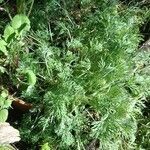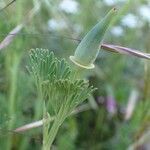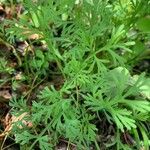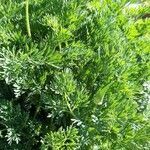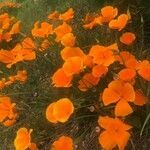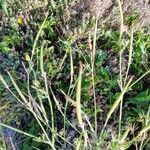Annual or perennial herb. Habit various, from a tufted rosette to an erect many-stemmed herb with the rosette stage almost completely suppressed. Stems ribbed, erect, glabrous, 10-30-(40) cm tall. Lvs much dissected; petiole > lamina; lamina to 10 × 10 cm in rosette lvs, usually much smaller in stem lvs. Pedicels ribbed, 5-10 cm long. Calyx hood apiculate. Petals obovate, yellow to orange, or yellow with orange base, rarely white, cream or red, (1)-2-3.5 cm long. Anthers > filaments. Capsule ribbed, straight or slightly curved, 25-90 × 3-4 mm.
Plants , perennial or annual, caulescent, erect or spreading, 5-60 cm, glabrous, sometimes glaucous; taproot heavy in perennial forms. Leaves basal and cauline; blade with ultimate lobes obtuse or acute. Inflorescences cymose or 1-flowered; buds erect. Flowers: receptacle obconic, cup with spreading free rim; calyx acute to acuminate, glabrous, sometimes glaucous; petals yellow to orange, usually with orange spot at base, 20-60 mm. Capsules 3-9 cm. Seeds brown to black, spheric to ellipsoid, 1.5-1.8 mm, reticulate.
Plants to 0.6 m high, glabrous, sometimes glaucous. Stems branching. Leaves to 8 cm long. Peduncle to 15 cm long. Petals flabelliform, to 6 cm long, light yellow to deep orange, often darker spotted at base. Stamens: filaments yellowish; anthers yellow. Capsule straight to slightly curved, to 10 cm long, glabrous. Seeds brown to black.
An annual plant. It grows 20-30 cm high and 15-20 cm wide. The leaves are feather like and blue-green. The stems are thin. The flower buds are pointed. The open flowers are cup-shaped and 8 cm across. The petals are silky looking. They are usually orange but can be purple, crimson or white. There are named varieties.
